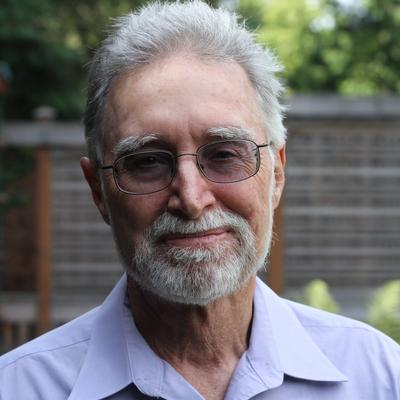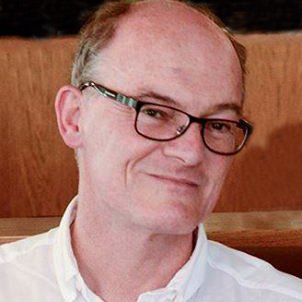Neither Capitalist Nor Socialist: The Political-Economy of Post-Capitalist Societies
How did the economies of the so-called socialist countries of the Twentieth Century - from the USSR to Yugoslavia, from Cuba to Hungary – function? Not like Karl Marx envisioned socialism, Catherine Samary argued in her 1988 book Plan, Market and Democracy. Even Lenin and Trotsky “characterised the USSR as a transitional society” – as societies in transition towards socialism, not as socialism already achieved. But societies “transitioned” differently. Samary differentiated “three types of economic systems which have really existed or were proposed at one point or another in the so-called socialist countries”.
Catherine Samary is an economist and specialist on the Balkans and Eastern Europe. Samary has previously been teaching at the Université Paris-Dauphine. She was a member of the IRISSO (Institute for Interdisciplinary Research in Social Sciences) and collaborator of the Institute of European Studies at the University Paris 8. She was a collaborator of Le Monde Diplomatique and has been active in several internationalist associations since the sixties (including Espaces Marx and ATTAC).
Originally published: The following text is a (drastically) shortened version of the “Introduction: theoretical, political and methodological questions” of Samary's book Plan, Market and Democracy (1988). Read more on this book, see a link to the complete book and read an announcements of a new book, edited by Samary and to be published in 2018, at the bottom of the article.
▰
"Between capitalist society and communist society, there stands the period of the transformation of the one into the other."
- Karl Marx, Critique of the Gotha Programme
M
arx and Engels left some well-known indications on how they conceived
socialism. They were grounded in a critique of the contradictions of
the capitalist system, of ‘generalised commodity production.’ The
superiority
of
socialism/communism could emerge only by organising human labour on a
new basis, on a scale at least as developed as that of the most
advanced phase of capitalism. The internationalisation of production
and the worldwide division of labour promoted by capitalism offered
humanity a chance to develop its productive forces in an
unprecedented way — but at a growing social cost.
The
discrepancy between the actual circumstances of these revolutions and
the writings of Marx and Engels raised some new terminological
problems, that is whether one could call the immediately
post-capitalist society a socialist society. More importantly,
substantial new problems grew up under the terminological dispute:
the risk of growing social differentiations fostered by the
bureaucratic apparatus, and/or the market, appeared. Cultural, social
and economic underdevelopment was conducive to the delegation of
power and to the crystallisation of privileged layers defending their
own interests.
On
the plane of terminology, Marx and Engels often used socialism and
communism interchangeably in their writings, even after their
well-known statement that the socialist mode of distribution
corresponded to a lower stage of communism. In any case, the
‘associated producers’ were supposed to manage directly the
product of their labour from the moment that capitalism was
overthrown — in this respect, socialism was already communism.
Did
this mean that the USSR under the New Economic Policy (NEP) should be
labelled socialist? Or that it could be socialist? For the
Bolsheviks, it was a transitional society to socialism, major parts
of whose economy were still capitalist or based on petty commodity
production. In adopting the name Union
of Soviet Socialist
Republics,
they
intended
to
stress
their goal of transformation,
not
the
immediate
reality.
Lenin
stressed
this
point:
“No one, I think, in studying the question of the economic system of Russia, has denied its transitional character. Nor, I think, has any Communist denied that the term Socialist Soviet Republic implies the determination of Soviet power to achieve the transition to socialism, and not that the new economic system is recognised as a socialist order. But what does the word 'transition' mean? Does it not mean, as applied to an economy, that the present system contains elements, particles, fragments of both capitalism and socialism? Everyone will admit that it does.” 2
The
Bolsheviks’
conception
of
what
this
transitional
economy
could
be,
or
should
be,
was
particularly
unclear
because
they
had
not
imagined
that
the
revolutionary
victory
could
remain
isolated
in
backward
Russia. 3
They did not even consider the idea that socialism could be achieved in a national framework, that is a framework less developed than capitalism which was already a worldwide system. On this point, the Bolsheviks’ theoretical position stood in the fullest continuity with Marx’s thought: they conceived socialist transformation as a world process that only began in the national arena, after the seizure of political power.
In other words, socialist revolution would not stop with the seizure of power, or even with nationalizations. The historical function of the transition was to carry through this ''revolutionary transformation of capitalism into communism" during which regressions would be possible, even to the point of jeopardizing the socialist future.
Trotsky's
theory
of
"permanent
revolution"
was
an
extension
of
Marx's
conception
into
which
it
integrated
the
actual
conditions
in
which
revolutions
were
developing,
in
the
social
formations of
the
capitalist
periphery.
The
Left
Opposition
to
Stalin
believed
that
it
was
possible
to begin to build socialism in a country like the USSR, provided one
did not harbor the illusion that one could succeed on one's own. It
was vital for the USSR to raise itself out of its backwardness and
isolation. It should therefore not ask that everything, particularly
the possibility of revolutions in other countries, be subordinated or
sacrificed to the (impossible) task of building “socialism in one
country.” .
You said impossible? But by the late
1930s, Stalin officially proclaimed that socialism had been built in
the USSR. He imposed this ‘fact’ both domestically and
internationally. The Yugoslav revolution was the first breach in this
edifice built by Stalin, because it refused to bend to the diplomatic
interests of the new ‘great power.’
Designating the new formation
Faced with anathema from Stalin, the Yugoslav Communists were forced to explain what had really happened in the beloved ‘homeland of socialism’ they had idolised until then. Milovan Djilas wrote:
“Given
in particular that the USSR was for a long time the only socialist
country, a rather backward country at that, surrounded by the
capitalists, and that the conscious participation of the masses to
the building of socialism played a relatively minor role there, and
that revolutionary forces inside as well as outside the country
turned out to be rather weak, what emerged in the end was the
creation of a privileged layer of bureaucrats and bureaucratic
centralism; the state was transformed provisionally into ‘a power
above society’.”4
The only problem was that this
‘provisional’ situation has proved to be quite lasting and has
been repeated, in other forms, elsewhere, notably in Yugoslavia. It
is well-known that there is no consensus, not even among Marxists,
around a unanimously accepted characterisation of this new historical
phenomenon.
This
new type of society has been variously called ‘socialist’
(sometimes with the addition of an adjective such as ‘bureaucratic’,
‘state’ or even ‘market’ in the case
of Yugoslavia), ‘capitalist’ (with a range of contradictory
variants) or ‘new class’ society. The economic and political
criteria used in these analyses are heterogeneous and need not be
discussed here. 5
We
subscribe to a fourth option which also has several possible
variants. We analyse these societies, unforeseen by Marx, as hybrids,
neither capitalist nor socialist, and devoid of a new ruling class,
playing an independent and coherent role in the relations of
production. This approach stands in the continuity of Lenin’s and
Trotsky’s when they characterised the USSR as a transitional
society.
‟The society can undergo a regression towards capitalism or a blockage of the transformation of social relations as a result of bureaucratization.On the theoretical plane, the idea of a transition to communism, even when one inserts a presocialist period, implies that there is no real stabilization at any given intermediate stage, that elements really belonging to the future are already present, just as socialism was already a form of communism. The problem is that the bureaucratic deformation of these elements obviously poses a difficulty in this respect. The direction of their evolution is no longer guaranteed. The society can undergo a regression towards capitalism or a blockage of the transformation of social relations as a result of bureaucratization. This is why we prefer to describe these societies as postcapitalist societies, insofar, of course, as capitalism has not been restored.
How
should advances toward socialism be identified?
Simply
rejecting the equation that ‘Stalinism = socialism’ (even if one
adds the adjective ‘underdeveloped’) does not resolve the
problem, far from it. But any attempt to go beyond that and define
socialism runs the risk of elevating certain normative criteria,
selected on the basis of subjective preferences, above others: Have
the means of production been nationalised? What percentage? Is there
a plan? What kind of plan? Is there democracy? Beyond what threshold
can one say that democracy is present?
We
prefer to adopt the same approach to socialism as we adopt towards
social property — they are in fact simply different facets of the
same problem — namely that it involves the transformation of social
relations in the direction of the withering away of relations of
oppression and exploitation, and the re-appropriation by each
individual — and therefore by all — of labour as a creative
activity.
We adopt W. Brus’s approach [2-1975] and extend it. Brus posits and
analyses the process of transformation of state
property into ‘social property’ in the strict sense —
which
means property actually controlled by society, and not just by the
state as an institution separate from the citizens, nor even simply
by one particular group of workers. The difference is that Brus does
not question the ‘socialist’ content of the societies described
in this way. For us, on the other hand, there can be no socialism
without social property, nor advance towards socialism without an
advance towards the transformation of property relations. We will
deal with socialist self-management in line with this approach.
Socialist self-management
The problem is that the idea of
self-management can be promoted by certain ruling classes or castes
to preserve their power under new forms. It is then designed, in the
best of cases, only to get the workers to participate more actively
in their own exploitation. This sort of atomized self-management is
sometimes proposed when it is realized that the compartmentalization
of work slows down the rate of growth of productivity. At other
times, self-management can be the watchword of particular layers who
hope to gain more responsibility and influence. The point is to
obtain a new delegation of power along with a shift in the balance of
forces within the privileged layers. This, incidentally, can cause
the emergence of breaches “at the top,” of which those “at the
bottom” can take advantage. Overall, though, the result will be not
that alienated wage labor withers away — to the benefit of all —
but that new stratifications emerge.
‟There can be no socialism without social property.
The juridical question is not the main argument. But this does not mean
that it plays no role whatever. “Property rights” are relations
between human beings, not relations between human beings and things.6
We will see that rights guaranteed by official ideology can be
circumvented or made more effective. In either case, their existence
changes people's behavior and consciousness. We will also see that
these rights can be challenged directly when a process of capitalist
restoration sets in.
Beyond Definitions
The word ‘market,’ used in everyday
language (including by economists), can describe very different
realities and social dynamics. The same is true, in fact, of the word
‘planning.’ During the post-capitalist transition, there is
necessarily a certain dose of market relations (how much? that is the
question!). The debate can be clarified if participants explicitly
state which areas and which choices are assigned to the market, and
with how much leeway in each case.
Three models
For the sake of this necessary process
of terminological clarification, we will distinguish, along with
Brus, three major ‘models’, each one of which displays
significant differences in the role of market mechanisms. They
correspond to three types of economic systems which have really
existed or were proposed at one point or another in the so-called
socialist countries.
- Bureaucratically centralised planning
These are the systems in which money
plays a passive role. Prices are formed by the planners. One could
argue that, in theory, the methods and criteria used by the planners
in price formation are not arbitrary. In fact, specialists have
debated this point quite extensively. But in practice, the lack of
real transparency about the labour actually expended in the Soviet
economy means that prices have often acquired a high degree of
arbitrariness. At any rate, the notion of passive prices does not
necessarily imply arbitrary prices, except in the mind of economists
who believe the only possible prices are the ‘true’ market
prices.
This first model corresponds to the
planning system in effect in the USSR under Brezhnev. It has existed,
with variations and historical specificities, in all post-capitalist
societies, from Vietnam, through Eastern Europe, to Cuba. It was the
basic reference in all so-called socialist countries until reforms
were attempted (in general in the 1960s). In some cases, as in
Czechoslovakia after the Soviet intervention, it was restored after
the reforms were reversed. It is the model which the Polish regime
has been trying to reform since the 1970s. (Price changes had caused
riots in Poland before the advent of Solidamosc). Even Romania,
despite its overtures to the outside world, remains totally
centralised.
This model is compatible with the
existence of specific economic circuits where money plays a more
‘active’ role (that is, where prices influence the economic
decisions of the ‘agencies’ involved). For instance, there exists
a partial recourse to market mechanisms in the distribution of the
labour force, since workers are free to choose their job on the basis
of the more or less attractive level of wages, among other factors.
Likewise, in the sector of consumer goods, one can purchase items
freely with one's wages, the only limit being the short supply of
these items. But this does not mean that supply and demand operate
freely to determine the choices of production. Nor does it determine
which sector, the private or the state sector, should produce what is
missing. Once again, this — the insufficiently ‘active’ role of
money and of the market — is precisely where certain reformers
find fault with the system.
This model is also compatible with
non-market-oriented reforms designed to improve its efficiency. In
East Germany, for instance, reforms have been introduced to change
the indexes used to measure performance, to create new channels
between the centre and the firms, and to allow for the signing of
contracts between firms after validation by the plan. Of course, the
particular type of political system which implements this model can
also make a big difference in how it operates.
- The use of market mechanisms by the plan
This second model enables money and
prices to play a more active role — yet without the ‘law of
value’ becoming the regulator of the economy. What this model
actually involves is the use of market mechanisms by the plan — not
the pre-eminence of the market. That pressures in favour of elevating
the status of the market exist in this model, is another matter. The
model can be implemented without workers self-management, as it was
in Hungary in the 1960s, or with workers self-management, as it was
in Yugoslavia from 1952 to 1964, before ‘market socialism’ was
introduced. This model also inspired the reforms put forward by
Soviet economists Liberman and Trapeznikov in the 1960s, implemented
in the USSR under Kosygin from 1965 to 1968, and taken up by Ota Sik
in Czechoslovakia and Wlodzimierz Brus in Poland around the same
period.
To summarise what they are about, we
could say that this model combines the supremacy of centralised
planning (which has, until now, been bureaucratic, but need not be)
over strategic development decisions with more room for decentralised
initiative on the basis of market relations (in the sense of
‘purchases and sales’) in other spheres. In this set-up, the
decisions of firms are influenced by the pricing system because they
must operate on the basis of an economic calculation of costs and
profits. Precisely who in the firm decides is another matter; we will
examine examples both with and without workers self-management. But
this does not mean that the prices on the basis of which the
calculations are made are free market prices reflecting the law of
value. Nor does it mean that the major investment decisions obey this
law.
- ‘Market socialism’
In
theory, this third model aspires to restore the full coherence of the
operation of the law of value — its automatic responses and
criteria. The only case where such reforms were actually put into
practice was in Yugoslavia, during one of the different reform
periods, between 1965 and 1971. But this model was advocated by
various ‘experts’ and ‘advisers’ in Eastern Europe, most
notably in Yugoslavia, Hungary and Poland by the IKK (executive
committee) of Solidamosc. It was also the logic behind the proposals
of certain Soviet economists, such as Shmiliov. In any case, one
should distinguish the decision to have a reform from its actual
implementation 7 .
To conclude: Economics and Politics
The
full importance of the political factor must be understood if we wish
to avoid a reductionist approach.
On
the one hand, the reforms discussed here have never been tried in
combination with the fullest political democratisation at all levels.
As a result, the ability to master the socio-economic effects of the
reforms was considerably reduced.
On
the other hand, even though all so-called socialist countries are
ruled by a one-party system, the relations between the party
leadership and the population are not the same everywhere. This has
an obvious effect on the degree of obstruction encountered by the
reforms and the audacity of the reformers themselves. In general, one
should distinguish the regimes brought to power by a popular
revolution (Cuba, Yugoslavia, Vietnam, Mao's China) from those where
the rulers have been designated by a crystallised nomenklatura.
Moreover, both the process of bureaucratisation and the process of
destalinisation have had a different profile in each country, and
each national bureaucracy, even the most loyal to Moscow, has sooner
or later sought to develop its own roots and legitimacy. Kadar in
Hungary is not the same as Ceaucescu in Romania. The problems of
bureaucratisation and bureaucratic government (one-party rule) cannot
be reduced to the question of Stalinism. The experience now underway
in the USSR emphasises the fact that a bureaucracy can develop
different policies and methods of rule, even in the same country
(Stalin ≠ Khruschev ≠ Brezhnev ≠ Gorbachev ≠ Ligachev, etc).
‟Until now, all attempts at reform of bureaucratic planning have ended in failure. There is much to be learned from this.
Until
now, all attempts at reform of bureaucratic planning have ended in
failure. There is much to be learned from this. Unfortunately, it
seems that each new turn in the so-called socialist countries is
immediately accompanied by new justifications, new state truths which
sometimes praise the very things which, only a few weeks earlier,
were denounced as ‘anti-socialist deviations.’
This
is particularly harmful because nations who wish to escape the logic
of capitalist development, without closing themselves off to the
world capitalist environment, desperately need a critical review of
these experiences. What is the best way to advance against the stream
of world trade, towards a socialist goal, without living in autarky?
Can one borrow some mechanisms of the capitalist system (such as the
logic of profit as an incentive and a criterion for the orientation
of economic development) without being saddled with all its evils?
Can the market and its laws be introduced and given a socialist
content?
These
questions were already at issue in the debates about the NEP in the
USSR of the 1920s. Stalinism closed these discussions and brutally
interrupted the NEP. It is therefore necessary to unearth the real
content of these discussions and evaluate them in light of the
experience since then8.
In
trying to deal with these questions, we have been guided by one
postulate only: the belief that the communist perspective makes sense
only if it means the emancipation of ‘each individual and therefore
of all.’
To
avoid getting lost in the maze of different situations and preserve
one's critical spirit, to develop criteria which are objective but
not dogmatic, it is necessary to keep in mind the goal towards which
one is striving — provided one thinks it is worth the effort —
namely the withering away of all classes, privileges and relations of
oppression and exploitation. We should note here that this does not
mean a uniform, conflict-free or even easy to manage, society. The
theoretical hypothesis that this emancipating goal remains relevant
today can be grounded only in a common analysis of the contradictions
of both the capitalist and post-capitalist systems.
On Plan, Market and Democracy (1988)
and more to come in 2018.
The book Plan, Market and Democracy (1988), published at a moment of crisis in the so-called socialist USSR, reflects on the experiences of the so-called socialist countries during the twentieth century. Samary analyses the contradictions and conflicts within their socio-economic systems, during the era of “bureaucratically styled planning” of the USSR and during the (variety of) reforms that occurred over the decades in different regions.
After a general presentation of “theoretical, political and methodological questions”, in which Samary differentiates “three types of economic systems which have really existed or were proposed at one point or another in the so-called socialist countries”, each variant's contradictions are analysed in separate “lectures”: (1) the centralized bureaucratic planning of the “soviet model” and the different types of reforms. (2) The introduction of some market relationships combined with a reformed planning - without or with self-management rights for workers in the factories. (3) “Market socialism” which suppresses any plan but increases self-management rights in all factories. The last part of the book is a “critical review and up-date” of the “Soviet 1920s debate on the law of value. The conclusion raises the issue of “social optimum”.
In a new book edited by Samary, to be published in 2018, including several authors and her own contributions, she will be revisiting the “short XXth Century” and the post 1989's capitalist globalisation according to her central concerns: up-dating the past conflicting experiences and debates on the "transition to socialism" with a central focus on the issue of self-management, and linking them to the present ones linked to the issue of the 'commons'.
SE will announce the publication of this new book by publishing one of Samary's articles from this book.
On Plan, Market and Democracy (1988)
and more to come in 2018.
 |
| The full version of the book can be downloaded here. |
After a general presentation of “theoretical, political and methodological questions”, in which Samary differentiates “three types of economic systems which have really existed or were proposed at one point or another in the so-called socialist countries”, each variant's contradictions are analysed in separate “lectures”: (1) the centralized bureaucratic planning of the “soviet model” and the different types of reforms. (2) The introduction of some market relationships combined with a reformed planning - without or with self-management rights for workers in the factories. (3) “Market socialism” which suppresses any plan but increases self-management rights in all factories. The last part of the book is a “critical review and up-date” of the “Soviet 1920s debate on the law of value. The conclusion raises the issue of “social optimum”.
In a new book edited by Samary, to be published in 2018, including several authors and her own contributions, she will be revisiting the “short XXth Century” and the post 1989's capitalist globalisation according to her central concerns: up-dating the past conflicting experiences and debates on the "transition to socialism" with a central focus on the issue of self-management, and linking them to the present ones linked to the issue of the 'commons'.
SE will announce the publication of this new book by publishing one of Samary's articles from this book.
NOTES
1 There
is no unanimity, even among Marxists, on the complex way in which
this hierarchy operates, combines with national realities and has
evolved in the course of the 20th century. The notion of uneven and
combined development and the different theories on the uneven
development of capitalism on a world scale are essential to an
understanding of the Yugoslav case. We state this even though we do
not agree with all the centre and Periphery analyses, a debate which
would take us beyond the confines of this study. For a glimpse of
the discussion, see rubric 4 of the bibliography, ‘External
constraints.’
2
Lenin, ‘Left-Wing Childishness and the Petty Bourgeois
Mentality,’ Collected Works, Volume
27, p. 335.
3 David
Mandel [1-1983] (see NB in note 1) has shown the extent to which the
idea of a socialist transformation of the economy only became
widespread in 1918, as a defense against sabotage and factory
closures. Among the workers, as well as in the Bolshevik program,
the first demand was for the imposition of controls on films which
remained under capitalist management. For the evolution of the
Bolshevik position, see among others, Ernest Mandel, ‘Stages of
the Soviet Economy,’ in Marxist
Economic Theory
[1-1982]; Bettelheim, ‘First period: 1917-1923,’ [1-1976] and
Trotsky, History
of the Russian Revolution
[1-1980].
5 See
selected viewpoints in the bibliography on the debate on the class
nature of the USSR and kindred societies.
6 Marx is
not the only one to claim this. Paradoxically, the free-enterprise
School of Property Rights has adopted a similar problematic,
combined with an apologetic view of capitalist private property
rights. See Henri Lepage, one of the main French spokesperson for
this school in L'Utopie
capitalists
and Capitalisms
et autogestion
[3-1978].
7 Comment from CS, 01/2018: The
study (and lecture presented in the notebook) of the Yugoslav system
in that phase shows that conflicting socio-economic pressures (pro-
or radically against capitalist trends) were expressed through
social and political movements. The fact that capitalism was not
restored can be concretely analyzed: the new reformist turn (in
spite of its contradictions and limits) impulsed by the titoist
leaders dismantled the autonomous banking system and the alliance
between its managing forces and the technocrats of the large
factories; new socio-economic rights for self-managed basic units
were introduced by Kardelj in constitutional amendments (1973-1976).
8 Comment from CS, 01/2018: This
point has been developed later through the concrete and comparative
analysis of the capitalist restoration after 1989 in various
articles (see http://csamary.free.fr
). In 2017, my article updating those debates "From decolonized
communism to the democratic system of commons" is at the core
of the new book to be printed in 2018.























Comments
Post a Comment
Your thoughts...